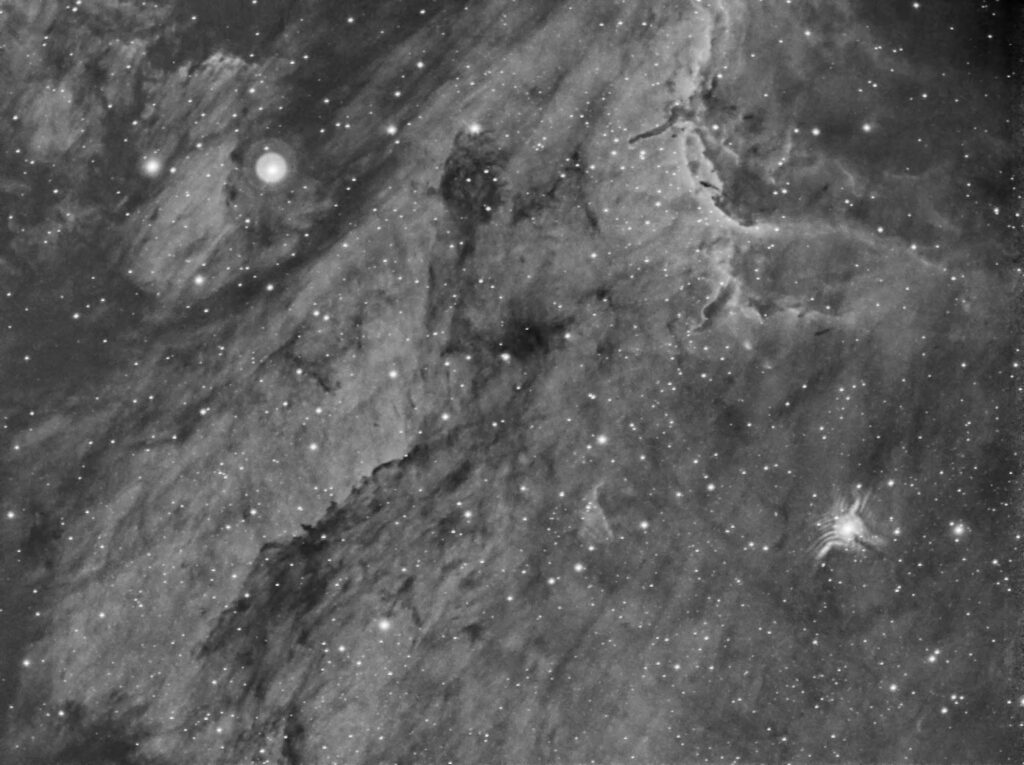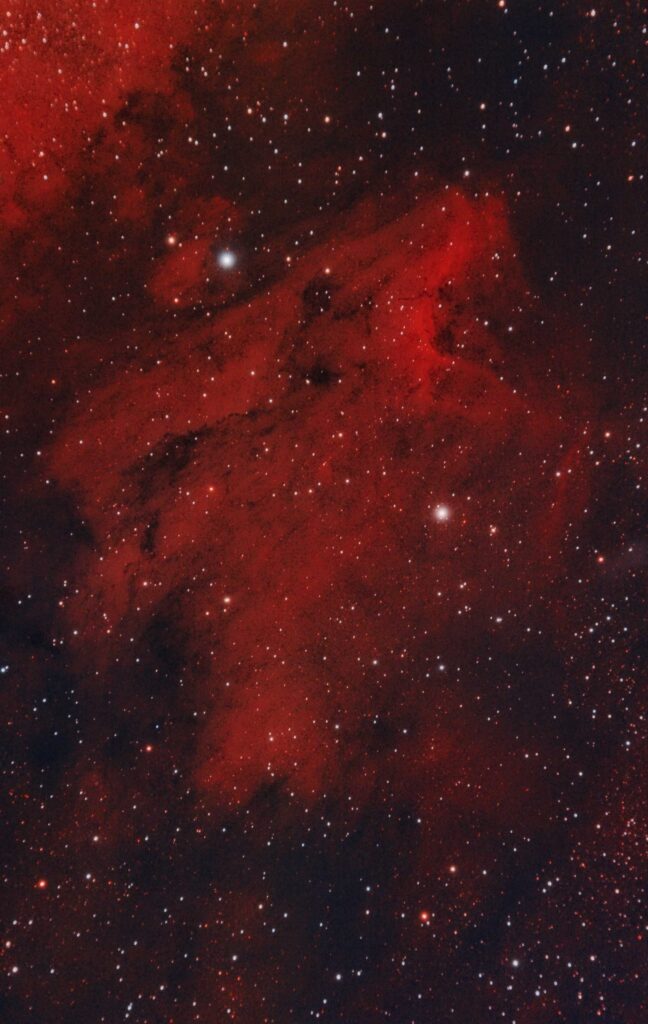The Pelican Nebula or IC 5070 is an emission nebula in the constellation Cygnus, located near Deneb (α Cygni) and separated from the larger nebula.NGC 7000by a dark region. It stretches about 30 light-years across and is located about 1800 light-years from us and is one of the great nebular complexes of our galactic neighborhood.
The dark zone is called the Gulf of Mexico, because on some astronomical plates many years ago it resembled that region of the Earth. Both nebulae, IC 5070 and NGC 7000, are part of the same H II region.
Especially dense areas of cold gas are still visible with relatively modest telescopes and even binoculars but a sky free of light pollution is needed to appreciate its extensive contours.
Inside the Pelican Nebula, clouds of dark dust also help define the eye and long beak, while a bright front of ionized gas suggests the silhouette of the head and neck IC5067.

Technical data:
Telescope: SkyWatcher ED80
CCD:Atik314L+
Focal Length Reducer: Meade 6.3
Filters: Astronomik Ha 12nm
Telescope Guide: S/C 203mm
Mount: LX200 GPSR
CCD Guide: QHY5
CCD Temp:-5º
Ambient Temp:19º/21º
Location: Anunaki Observatory / Rivas Vaciamadrid (Madrid)
This nebula has been much studied because it mixes star formation and developing gas clouds. The light from young stars slowly heats the cold gas producing an ionization front that moves outward.

Technical data:
Telescope: SkyWatcher ED80
Camera: Canon 40D
Focal Length Reducer: SW 0.8x
Telescope Guide: SW 60mm
Mount: LX200 GPSR
Guide CCD: QHY5
Location: Anunaki Observatory / Rivas Vaciamadrid (Madrid)
In the Pelican we have one of the most famous objectsHerbig Harothey are known, visible as a small elongated and dark nebula shaped like a snail’s horn. ObjectsHerbig Harothey are basically very young stars that move within the nebula at full speed leaving a nebular trail behind them.
